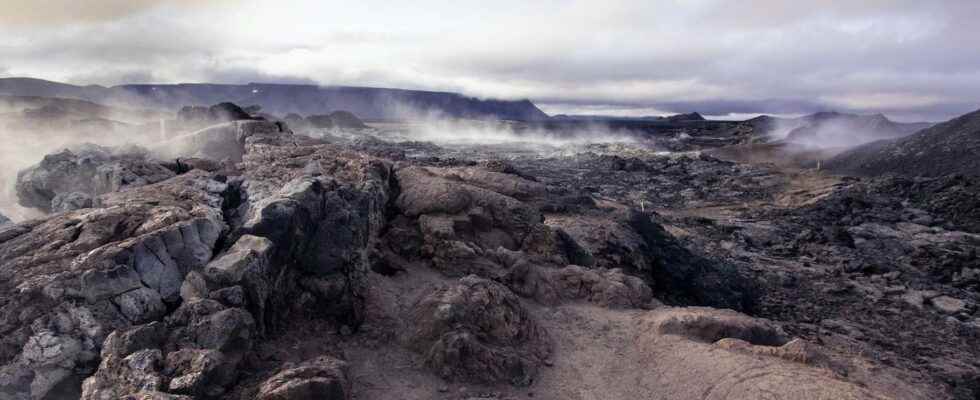The Krafla (Iceland) was already an exceptionally beautiful volcanic system. And a region rich in geothermal resources. Which is now also preparing to become a unique scientific research site in the world. An international team is in fact preparing to create an underground magma observatory there.
You will also be interested
[EN VIDÉO] How does magma form before a volcanic eruption? Magma is at the origin of the formation of volcanoes. This molten rock, which bubbles in the crater, comes from a partial melting of the Earth’s mantle. Futura met Jacques-Marie Bardintzeff, doctor in volcanology, who tells the story of the origin of magma.
The place is wonderful. A caldera about ten kilometers. A crater lake filled with amazingly crystal clear turquoise water. Still hot lava fields. Plumes of smoke and sulphurous bubbles. A gift from nature.
It is at the heart of this still active volcanic system, the Krafla, that an international team of researchers is preparing to take the start of its ” Journey to the Center of the Earth “. Just a few hundred kilometers from Snæfellsjökull – a volcano asleep on the west side of Iceland – by which the heroes of Jules Verne had embarked on the adventure themselves.
At the heart of the project launched in 2014, scientists from 11 countries and 38 institutes and companies. The team “Krafla Magma Testbed (KMT)”. A budget of nearly 90 million euros. One goal: to drill some two kilometers deep to reach the Magma chamber of the volcano. And thus give life to the very first underground magma observatory in the world.
For geothermal energy and scientific knowledge
It should be remembered that the only data available to researchers concerning underground magma were collected following “Chance encounters”. When drilling on volcanoes in Hawaii or Kenya. And even already, on the side of Krafla. In 2009, while geologistswere digging into the region to explore the possibility of exploiting new geothermal fields , their trepanhad penetrated a pocket of magma at over 900 ° C!
Magma at 900 ° C – in a pocket estimated at some 500 million cubic meters – allows pockets of water to be overheated nearby. And engineers to implement renewable electricity production systems using, on the surface, steam at no less than 450 ° C. The highest volcanic vapor temperature on record. With an energy production potential that makes you dream. Since only two wells allowing its rise would be enough to produce as much as 19 wells using more conventional geothermal energy. The KMT project could thus lead to promising new geothermal operations.
But for the volcanologists, the surprise came rather from the shallow depth at which the drilling stopped. Barely 2.1 kilometers below the surface. While they thought they had to go down to more than double before falling on the magma of Krafla. A boon for researchers, who hope to have access to information that could prove to be very useful in improving their data systems. prediction of eruptions .
Already, work has shown that the magma in this pocket has properties similar to those of an eruption that occurred in 1724. It would therefore not be less than 300 years old. And could also allow researchers to better understand the volcanoes dynamicsand that of geothermal systems. Even shed some light on the origin of the continents.
The first drilling is scheduled for 2024. It remains to be seen whether the instruments will be able to withstand such an extreme environment. And to hope that the operation will not trigger a volcanic eruption. Even if in the matter , volcanologists seem calm. Nothing like this happened during the drilling that touched the magma byaccidentthese last years. “It’s like pricking an elephant with a needle”, assure the researchers.
Interested in what you just read?
.
fs11
